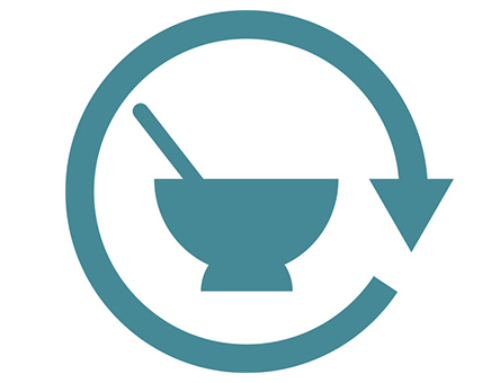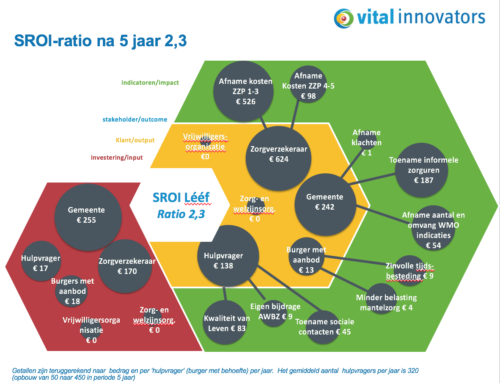Beware of the chicken-egg problem. When parties are excited, but first ask for proof, check carefully whether you have the means to provide that burden of proof. And projects aimed at prevention are always difficult, as long as no owner of the problem is found.
Intention
The lifestyle guidance in cardiac rehabilitation in the Zaans Medical Center (ZMC) was assessed as unsatisfactory on three points by the Inspectorate. The problem was not in the start of the process: patients were well received in the hospital and the first weeks of cardiac rehabilitation were properly arranged. The offer in the field of lifestyle, like quitting smoking, weight loss and patient follow-up, turned out to be insufficiently secured. In addition, the feedback of the data was insufficient. This led to unnecessary drop-out among patients later in the process. A new incident, and with it a recording, may have been lurking as a result. This results in high health care costs. Improving cardiac rehabilitation was therefore urgently needed.
After a quotation process, Viactive was chosen from four providers to improve cardiac rehabilitation with the ZMC. In collaboration with Lifestyle Interactive, University of Maastricht, ZMC, lifestyle counselors and dieticians, ViActive has developed an innovative cardiac rehabilitation concept. It concerns a redesign of the rehabilitation process, incorporating e-health and a lifestyle module. The duration of cardiac rehabilitation is hereby extended to one and a half years. Personal guidance and targeted training (committed to a healthier lifestyle) comes first.
Approach
- By talking to all stakeholders in the chain (patients, specialists, physiotherapists, psychologists, lifestyle experts, patient association and health insurers) and performing observational research, cardiac rehabilitation has been evaluated. The following points for improvement were noted:There is little cooperation or coordination between the different care providers and modules. It lacks a standard MDO (multidisciplinary consultation) and clear control over the patient.
- After four months, some of the patients are out of the picture and there is no longer any control over long-term and sustainable lifestyle change. This makes the chance of falling back into old patterns considerable. Moreover, three to four months are too short to bring about a behavioral change.
- The content of the program – including the need for additional guidance – is determined during an intake interview on the basis of standards. However, the observational study has shown that the need for a personalized program often takes six months to a year to take shape, and then the patient is no longer under supervision.
Based on these insights, a redesign of cardiac rehabilitation has been made. With the exception of the lifestyle module, the cost per patient could fit within the (heaviest) DBC (guideline 2014).
Result
A well thought out, affordable and feasible concept with support from all stakeholders in the rehabilitation process. The main improvements were:
- A personal intake and approach;
- An extension of cardiac rehabilitation to one and a half years;
- Contribution of a lifestyle module, tailored to the cardiac rehabilitation modules PEP (psychological and emotional support), FIT (building condition) and the info module;
- An additional e-coaching system, with a coach who also has physical contact with the patient, so no stranger;
- Via e-coaching it is also possible for patients to exchange knowledge with each other;
- A PDCA cycle linked to the MDO, to monitor patients' progress, fed with information from the e-coaching system.
The implementation just didn't go as planned. Financial resources were required for implementation and execution, which the ZMC did not have. Talks were then held with several potential financiers (including. health insurers, ZonMw and the Heart Foundation). Everyone was excited, but for various reasons it did not come to financing.
The effectiveness of the program was well substantiated with a business case, but it turned out not to prove beforehand. For this it had to be implemented first. Demonstrable evidence of effectiveness could accelerate implementation and funder persuasion. The plans for an impact study by the University of Maastricht were ready. However, money is also needed to carry out an impact study. And when a suitable grant application was awarded, “in-kind” financing was a condition – bringing in your own money that was not there. A vicious circle.
The lessons
- Savings and prevention are difficult to invest. The new cardiac rehabilitation would not yield any direct financial gains and, according to the business case, the financiers would not be the ones who directly benefit from financing.. From (financial) benefits are visible in other places.
- Once the concept was implemented and proven, other hospitals would be visited. This step could possibly have been taken at an earlier stage, in order to gain more support from the 2and every line for this approach.
- Dividing the realization into smaller steps could also have been a possible solution to the financing problem. When 75% of the new process had already actually been realized, there might have been more enthusiasm for financing after all.
- Besides the financing problems, the time may not have been right yet. The lead time of one and a half years did not match the guidelines and financing structure. Whether the supply remained the same and the quality would improve did not seem obvious to everyone – wasn't it better to simply continue to fully comply with the guidelines?
- Despite the fact that scientific research has substantiated the importance of lifestyle, Dietetics and lifestyle came under a critical magnifying glass during the same period. Does this belong in the second line? The inspection thought so, having regard to the assessment of the ZMC. Other parties thought it was more something for primary care or for the patient himself. It was therefore uncertain whether 'losing weight' and 'stopping smoking' would remain in the insurance package. The enthusiasm to invest in lifestyle was not great.
Name: Peter Wouters:
Organization: Viactive









